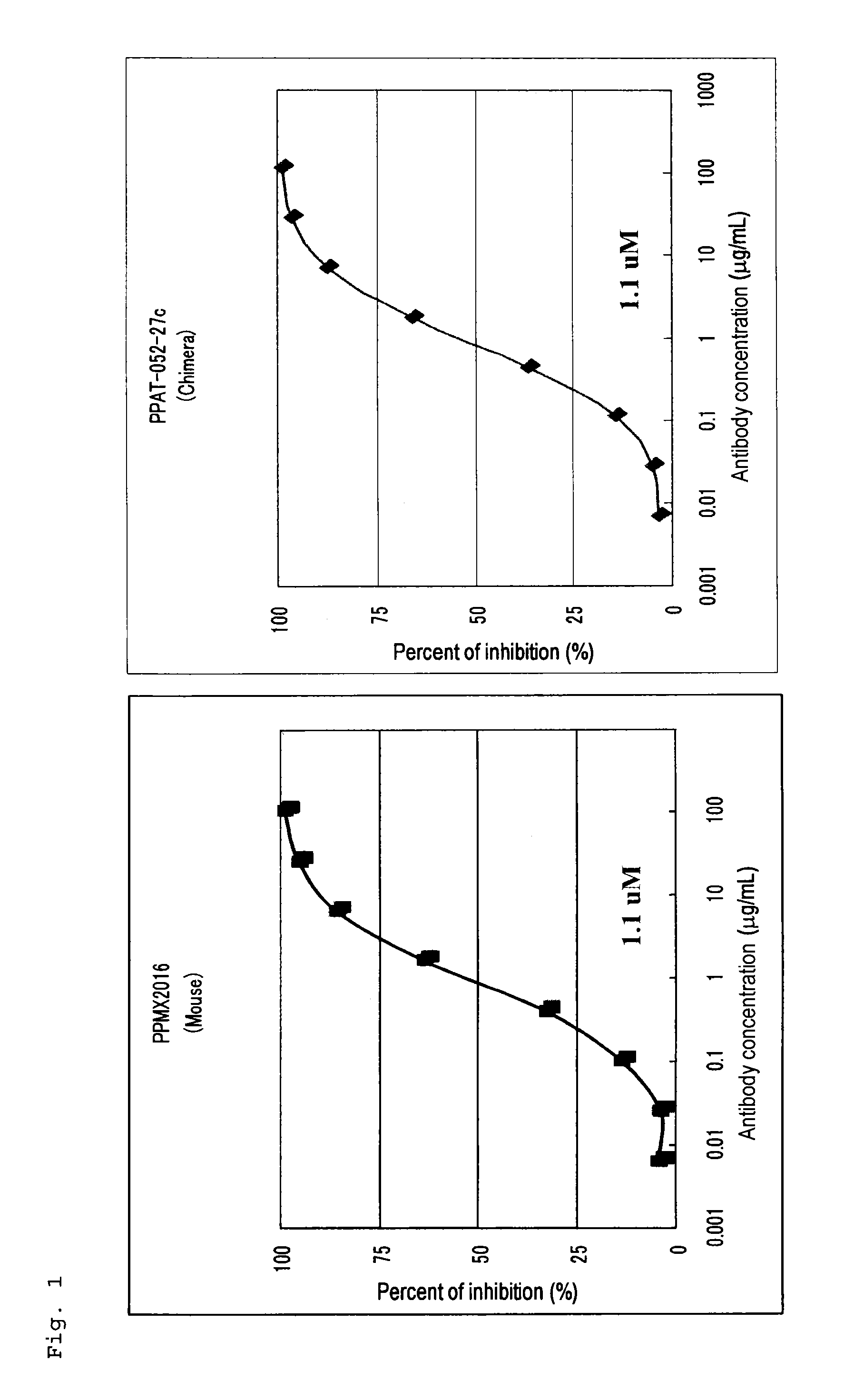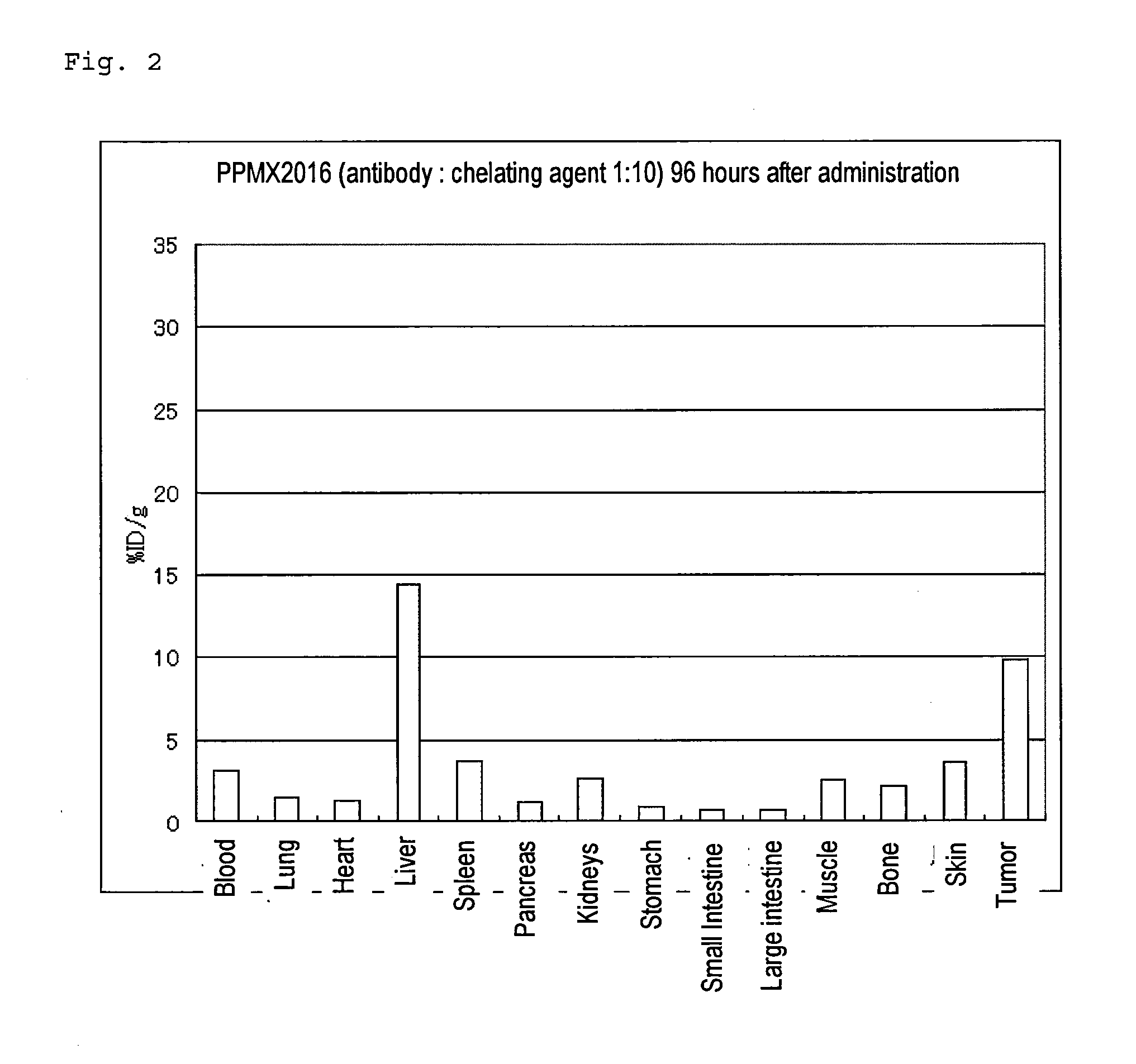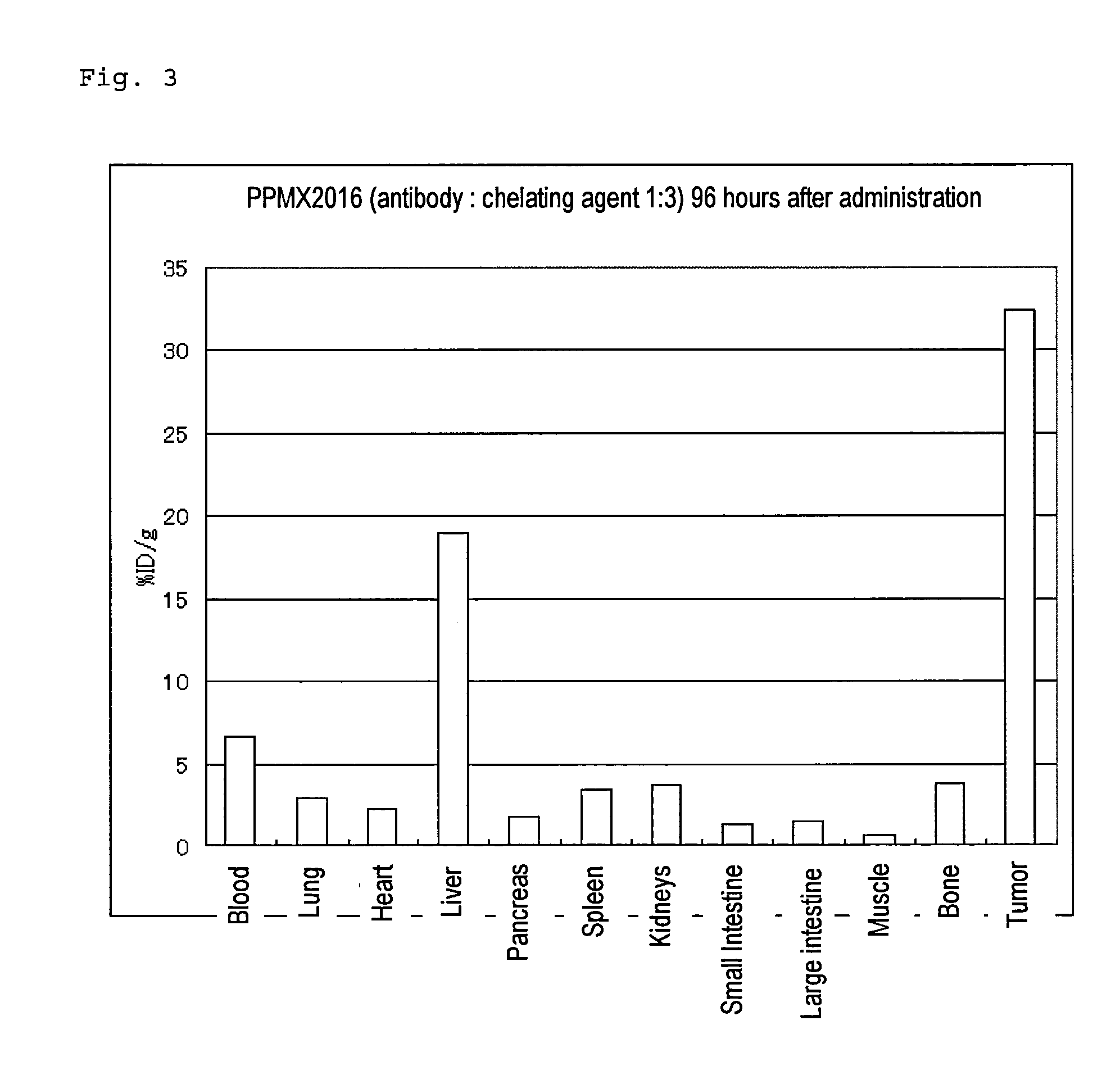Radioactive metal-labeled Anti-cadherin antibody
a radioactive metal and anti-cadherin technology, applied in the field of radioactive metal-labeled anticadherin antibody, can solve the problems of adverse side effects and unsatisfactory treatment effects of these agents, and achieve the effect of high cancer tissue shrinkage, effective therapy, and confirmation of the therapeutic effect of the agen
- Summary
- Abstract
- Description
- Claims
- Application Information
AI Technical Summary
Benefits of technology
Problems solved by technology
Method used
Image
Examples
example 1
n of soluble CDH3 antigen
[0077]Soluble CDH3 (sCDH3) protein in which the C-terminal transmembrane region had been deleted was produced to serve as an immunogen for producing an anti-CDH3 antibody. (1) Production of soluble CDH3 antigen expression vector
[0078]PCR was performed by use of a CDH3 full-length cDNA as a template and a forward primer (SEQ ID NO: 3: CGCGGTACCATGGGGCTCCCTCGT, (hCDH3Full FW)) and a reverse primer (SEQ ID NO: 4: CCGTCTAGATAACCTCCCTTCCAGGGTCC, (hCDH3SolbRV)), which had been designed so as to amplify a segment corresponding to the CDH3 extracellular region (1-654 in SEQ ID NO: 2, hereinafter referred to as sCDH3cDNA). The reaction was performed by use of KOD-Plus (product of Toyobo) and under the following conditions: 94° C.-15 sec, 55° C.-30 sec, and 68° C.-90 sec (30 cycles)).
[0079]After completion of the PCR reaction, the reaction mixture was subjected to agarose gel electrophoresis, and a gel piece containing a band of a target size (about 2.0 kbp) was cut o...
example 2
ment of CDH3-expressing CHO cell line
[0084]For obtaining a cell line for anti-CDH3 antibody screening, a CHO cell line expressing full length CDH3 was established.
[0085](1) Production of CDH3 gene expression vector
[0086]In order to insert full-length human CDH3 DNA represented by SEQ ID NO: 1 into a mammal expression vector pEF4 / myc-HisB (product of Invitrogen), the full-length human CDH3 DNA was treated with two restriction enzymes KpnI (product of Takara Bio Inc.) and XbaI (product of Takara Bio Inc.) at 37° C. for one hour. The thus-obtained fragment was inserted into pEF4 / myc-HisB which had been treated with the same restriction enzymes KpnI and Xbal, by use of T4 DNA ligase (product of Promega) through a routine technique, whereby an expression vector pEF4-CDH3-myc-His was produced.
[0087](2) Acquisition of stable CDH3-expressing line
[0088]According to a protocol of an FuGENE (registered trademark) 6 transfection reagent (product of Roche Diagnostics K.K.), 8×105 CHO cells were ...
example 3
n of anti-CDH3 monoclonal antibody
[0090](1) Production of monoclonal antibody by use of soluble CDH3 protein as an immunogen
[0091]Soluble CDH3 protein (50 μg) dissolved in physiological saline was mixed with an equal amount of Titer-MAX Gold (registered trademark) (product of Titer Max), and the mixture was intraperitoneally and subcutaneously injected to MRL / lpr mice (Japan SLC inc.) for initial immunization. Subsequent immunization procedures were performed by intraperitoneally and subcutaneously injecting, to the mice, a mixture of soluble CDH3 protein (25 μg) and Titer-MAX Gold prepared in the same manner. Three days after final immunization, spleen cells were prepared from the mice under aseptic conditions, and the cells were fused with mouse myeloma cells SP2 / O-Ag14 or P3-X63-Ag8.653 through a generally employed polyethylene glycol method.
[0092](2) Selection of anti-CDH3 antibody-producing hybridomas
[0093]Selection of anti-CDH3 antibodies were performed through flow cytometry ...
PUM
| Property | Measurement | Unit |
|---|---|---|
| area | aaaaa | aaaaa |
| concentration | aaaaa | aaaaa |
| concentration | aaaaa | aaaaa |
Abstract
Description
Claims
Application Information
 Login to View More
Login to View More - R&D
- Intellectual Property
- Life Sciences
- Materials
- Tech Scout
- Unparalleled Data Quality
- Higher Quality Content
- 60% Fewer Hallucinations
Browse by: Latest US Patents, China's latest patents, Technical Efficacy Thesaurus, Application Domain, Technology Topic, Popular Technical Reports.
© 2025 PatSnap. All rights reserved.Legal|Privacy policy|Modern Slavery Act Transparency Statement|Sitemap|About US| Contact US: help@patsnap.com



